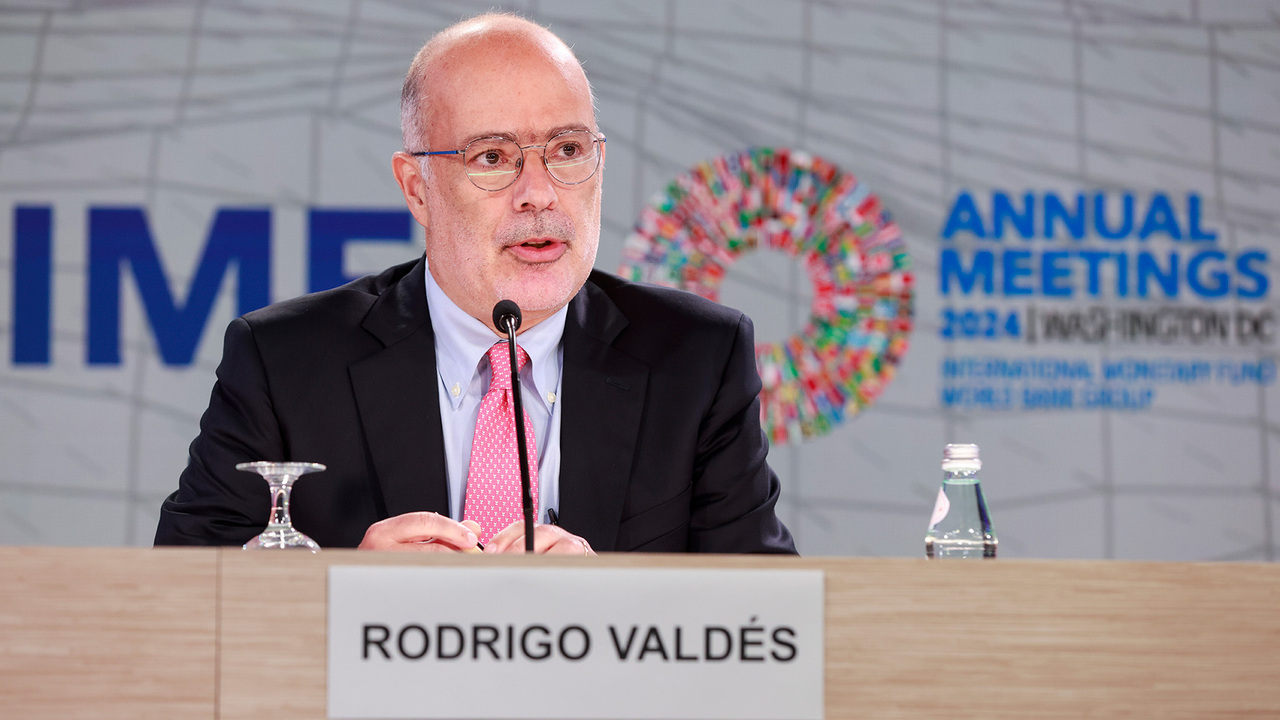

Barbados will experience an economic slowdown in the coming year as the world economy, including Latin America and the Caribbean, loses steam.
That is the prediction of the International Monetary Fund (IMF), which says that Barbados’ predicted economic growth this year will be 3.9 per cent, the 11th best among 35 countries in Latin America and the Caribbean.
The IMF is also forecasting that Barbados’ economic growth will slip to three per cent in 2025, placing it and five other countries at joint position 14 among these regional economies.
This is detailed in the international financial institution’s World Economic Outlook and the Western Hemisphere Regional Economic Outlook, which were both released during last week’s IMF and World Bank annual meetings in Washington DC, United States.
The IMF previously predicted that the Barbados economy would grow by 3.7 per cent but has now increased that slightly to 3.9 per cent, which is the same as the Central Bank of Barbados’ forecast issued in July.
The Central Bank’s latest growth prediction will be announced on Wednesday at the third quarter press conference by Governor Dr Kevin Greenidge.
Impact
The ten Latin America and Caribbean countries the IMF believes will grow more than Barbados this year are Guyana (43.8 per cent), Antigua and Barbuda (5.8 per cent), Aruba (5.5 per cent), Belize (5.4 per cent), Dominican Republic (5.1 per cent) Dominica (4.6 per cent), St Vincent and the Grenadines (4.5 per cent), St Kitts and Nevis (4.4 per cent), Nicaragua (four per cent), and Costa Rica (four per cent).
The IMF says next year will be a year of economic slowdown and that this will impact Barbados and other regional countries.
The 16 Latin America and Caribbean economies the Fund expects to out-perform Barbados economically in 2025 are Guyana (14.4 per cent), Dominican Republic (five per cent), Argentina (five per cent), St. Kitts and Nevis (4.3 per cent), Dominica (4.2 per cent), St Vincent and the Grenadines (four per cent), Grenada (3.9 per cent), Paraguay (3.8 per cent), Nicaragua (3.8 per cent), Guatemala (3.6 per cent), Costa Rica (3.5 per cent), Honduras (3.5 per cent), Antigua and Barbuda (3.5 per cent).
Those that the forecast says will match Barbados three per cent economic growth next year are Uruguay,
Panama, El Salvador, Venezuela, and Suriname.
IMF chief economist Pierre-Olivier Gourinchas says world economic growth “is projected to hold steady at 3.2 per cent in 2024 and 2025, but some low-income and developing economies have seen sizable downside growth revisions, often tied to intensifying conflicts”.
Speaking during a press briefing to launch the Western Hemisphere outlook, director of the Western Hemisphere Department, Rodrigo Valdes’ main message was that “there is a need to rebalance macroeconomic policies in the region and the . . . urgency to press on with structural reforms to boost potential output growth”.
Major shocks
“Over the last few years, the region has successfully weathered a series of major shocks in the world economy,” Valdes said.
“They showed resilience and they have adopted really macroeconomic policies in most countries that are at the top of the frontier of what we know. And so far, largely the region has stayed in the sidelines, on the sidelines of global geopolitical tensions.”
He added that “growth in the region is moderating as most economies are operating back near their potential”.
“What is concerning, however, growth in most countries is expected to return to its low historical average and this will not help with the region’s macroeconomic, fiscal and social challenges,” Valdes explained.
“Overall, we expect growth in Latin America and the Caribbean – if we exclude Argentina, which has an important rebound next year, and Venezuela with its own dynamics – growth will moderate from 2.6 per cent in 2023 to 2.2 per cent in 2025, going through 2.6 per cent also this year, 2024.”
He added: “So we’re going back to the lower part of the two per cent around these baseline projections. We see the risks to near-term growth tilted to the downside, partly reflecting global risks, including importantly the persistent geopolitical tensions.” (SC)





